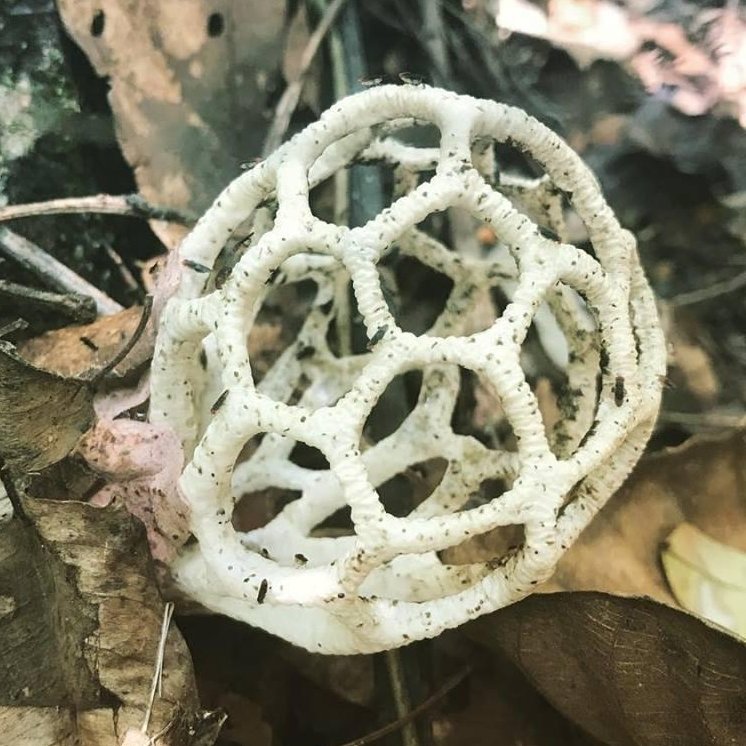Edible Ileodictyon (Ileodictyon cibarium)
- Division: Basidiomycota (Basidiomycetes)
- Subdivision: Agaricomycotina (Agaricomycetes)
- Class: Agaricomycetes (Agaricomycetes)
- Subclass: Phallomycetidae (Velkovye)
- Order: Phallales (Merry)
- Family: Phallaceae (Veselkovye)
- Genus: Ileodictyon (Ileodictyon)
- Type: Ileodictyon cibarium (Ileodictyon edible)
:
- Clathrus white
- Ileodictyon cibaricus
- Clathrus food
- Clathrus tepperianus
- Ileodictyon food var. gigantic

Ileodictyon edible is known primarily in New Zealand and Australia, although it was registered in Chile (and was introduced to Africa and England).
The more common and better known Red Lattice and similar types of clathrus also form such “cellular” structures, but their fruiting bodies remain attached to the base, but Ileodiction breaks away from the base.
Fruit body: Initially whitish “egg” up to 7 centimeters across, attached by white strands of mycelium. The egg bursts, forming a whitish volva, from which the adult fruiting body unfolds, shaped as a more or less rounded, checkered structure, 5-25 centimeters across, forming 10-30 cells.
Bars are lumpy, about 1 cm in diameter, not thickened at intersections. White, on the inside covered with an olive-brown layer of spore-bearing mucus.
The adult fruiting body often separates from the volva, gaining the ability to move like a tumbleweed.
Споры: 4,5-6 x 1,5-2,5 microns, ellipsoid, smooth, smooth.
Saprophyte, grows singly or in groups in forests or cultivated areas (fields, meadows, lawns). Fruiting bodies appear year-round in tropical and subtropical regions.
In English-speaking countries, it is called “stink cage” – “stink cage”. Somehow the epithet “stinky” does not fit at all with the word “edible” in the title. But let’s not forget that this is a mushroom from the Veselkov family, and many veselki are edible in the “egg” stage, and even have medicinal properties, and they acquire an unpleasant odor only in adulthood, to attract flies. So is the white basket worm: it is quite edible in the “egg” stage. No taste data available.
Ileodictyon gracile (Ileodictyon graceful) – very similar, but its lintels are much thinner, more elegant. Distribution region – tropical and subtropical zones: Australia, Tasmania, Samoa, Japan, Europe.
Photo from question in recognition.









